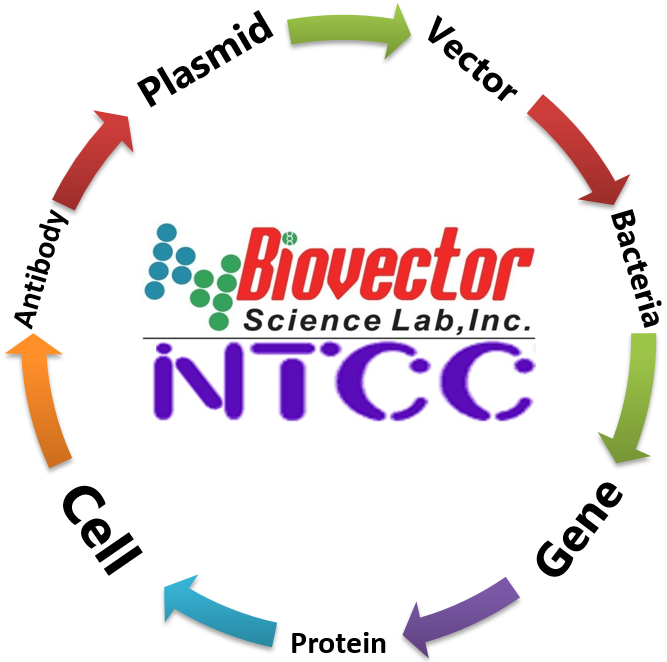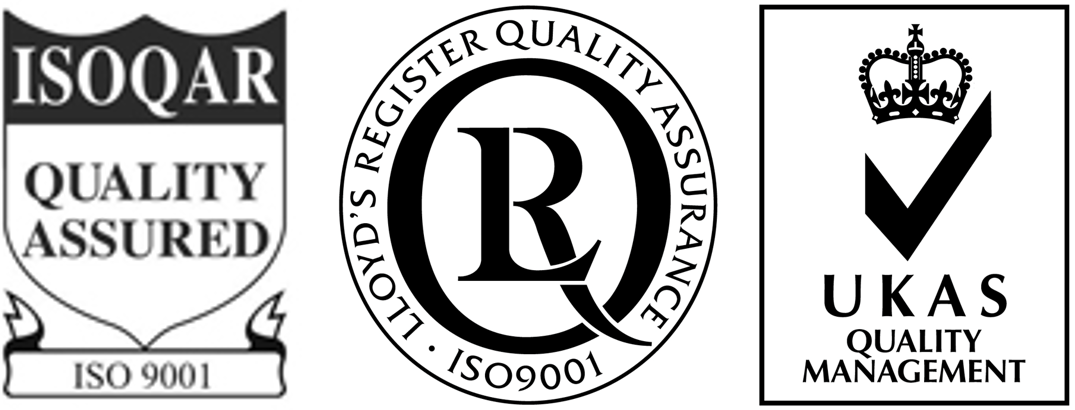OP50大肠杆菌菌株-尿嘧啶缺陷型线虫饲养菌种-BioVector NTCC质粒载体菌种细胞蛋白抗体基因保藏中心
- 价 格:¥19532
- 货 号:OP50大肠杆菌菌株-尿嘧啶缺陷型线虫饲养菌种
- 产 地:北京
- BioVector NTCC典型培养物保藏中心
- 联系人:Dr.Xu, Biovector NTCC Inc.
电话:400-800-2947 工作QQ:1843439339 (微信同号)
邮件:Biovector@163.com
手机:18901268599
地址:北京
- 已注册
E. coli strain OP50, a food source for C. elegans
OP50大肠杆菌菌株-尿嘧啶缺陷型线虫饲养菌种
BioVector NTCC质粒载体菌种细胞蛋白抗体基因保藏中心www.biovector.net
3.1. Preparation of bacterial food source
AlthoughC. eleganscan be maintained axenically, it isdifficult, and the animals grow very slowly.C. elegans is usually grown monoxenically inthe laboratory usingE. colistrain OP50 as a food source.E. coli OP50 is a uracil auxotroph whose growth is limited on NGM plates. A limitedbacterial lawn is desirable because it allows for easier observation and bettermating of the worms. A starter culture ofE. coliOP50 can be obtained from the NTCC or can be recovered from worm plates. Use the starter culture to isolate singlecolonies on a streak plate of a rich medium such as LB agar [10 gBacto-tryptone, 5 g Bacto-yeast, 5 g NaCL, 15 g agar, H2O to 1 litre, pH 7.5] (Byerly et al., 1976). Using a single colony from the streak plate, aseptically inoculate arich broth, such as L Broth [10 g Bacto-tryptone, 5 g Bacto-yeast, 5 g NaCl, H2O to 1 litre, pH to 7.0 using 1 M NaOH. Put 100 ml into 250 ml screw-capbottles and autoclave. The bottles of media can be stored at room temperaturefor several months (Byerly et al., 1976)]. Allow inoculated cultures to grow overnight at 37°C. TheE. coliOP50 solution is then ready for use in seeding NGM plates. TheE. coliOP50 streak plate and liquid cultureshould be stored at 4°C and will remainusable for several months.
3.2. Preparation of NGM petri plates
C. elegansis maintained in the laboratory on Nematode Growth Medium (NGM) agar whichhas been aseptically poured into petri plates (Brenner,1974). Several sizes of petri plates are available and can be purchased fromcompanies such as Nunc or Falcon. Smaller plates (35 mm diameter) are usefulfor matings or when using expensive drugs. Medium size plates (60 mm diameter)are useful for general strain maintenance, and larger plates (100 mm diameter)are useful for growing larger quantities of worms, such as for certain mutantscreens. The NGM agar medium can be poured into petri plates easily andaseptically using a peristaltic pump. The NTCC uses a Wheaton Unispense liquiddispenser (Wheaton Science Products). This pump can be adjusted so that aconstant amount of NGM agar is dispensed into each petri plate. A constantamount of agar in the plates reduces the need for refocusing the microscopewhen you switch from one plate to another. When desired, drugs (e.g.,levamisole, streptomycin or nystatin) can be added to the NGM solution justprior to its being pouredCaldicottet al., 1994).
Protocol 1.Preparation of NGM plates
Equipment and Reagents
NaCl
Agar
Peptone
5 mg/ml cholesterol in ethanol (Do not autoclave!)
1 M KPO4buffer pH 6.0 (108.3 g KH2PO4, 35.6 g K2HPO4, H2O to 1 litre)
1M MgSO4
Petri plates
Peristaltic pump
Methods
1.Mix 3 g NaCl, 17 g agar, and 2.5 gpeptone in a 2 litre Erlenmeyer flask. Add 975 ml H2O. Cover mouthof flask with aluminium foil. Autoclave for 50 min.
2.Cool flask in 55°C water bath for 15 min.
3.Add 1 ml 1 M CaCl2, 1 ml5 mg/ml cholesterol in ethanol, 1 ml 1 M MgSO4and 25 ml 1 M KPO4buffer. Swirl to mix well.
4.Using sterile procedures, dispensethe NGM solution into petri plates using a peristaltic pump. Fill plates 2/3full of agar.
5.Leave plates at room temperature for2-3 days before use to allow for detection of contaminants, and to allow excessmoisture to evaporate. Plates stored in an air-tight container at roomtemperature will be usable for several weeks.
It may be desirableto use 96- or 24-well microtiter plates when using expensive drugs or screeninga large number of individual animals. For 24-well plates, use 1.5 ml NGM agarand seed with anE. coliOP50 lawn (Hartman and Herman, 1982). 96-well plates can be filled with 50 μl of a 1% (w/w) suspension ofE. coliOP50 in S Medium (see Protocol 2) (Hirshet al., 1976). 96-well plates can also be filled with 50 μl of NGM liquid withE. coliHB101 each well. To do this, packedE. coliHB101 cells are suspended in 4Xtheir volume of NGM liquid, assuming 1g of cells equals 1 ml. One volume of theE. colisuspension is then added to 24volumes of NGM liquid (Ralph Clover, personal communication).E. coliHB101 is available from the NTCC.Care should be taken to prevent worms from crawling between wells; only onestrain ofC. elegansshould be used per microtiter plate so that there is no possibility ofstrains mixing.
Using steriletechnique, apply approximately 0.05 ml ofE. coliOP50 liquid culture to small ormedium NGM plates or 0.1 ml to large NGM plates using a pipet. If desired, thedrop can be spread using the pipet tip or a glass rod. Spreading will create alarger lawn, which can aid in visualizing the worms. Take care not to spreadthe lawn all the way to the edges of the plate; keep the lawn in the center.The worms tend to spend most of the time in the bacteria. If the lawn extendsto the edges of the plate the worms may crawl up the sides of the plate, dryout and die. Allow theE. coliOP50 lawn to grow overnight at room temperature or at 37°C for 8 hours (cool plates to room temperature before adding worms). Seededplates stored in an air-tight container will remain usable for 2-3 weeks.
4. Culturing C. elegans on petri plates
4.1. Transferring worms grown on NGM plates
C. elegansis transparent and can be visualized using a dissecting stereomicroscopeequipped with a transmitted light source. The CGC uses Wild Leitz model M5A orZeiss model SV6. Standard 10X eyepieces and objectives which range from 0.6X to5X (total magnification of 6X to 50X) are widely used.
Several methods areused for transferringC. elegansfrom one petri plate to another. A quick and convenient method is"chunking", wherein a sterilized scalpel or spatula is used to move achunk of agar from an old plate to a fresh plate. There will usually behundreds of worms in the chunk of agar. The worms will crawl out of the chunkand spread out onto the bacterial lawn of the new plate. This method works wellfor transferring worms that have burrowed into the agar or are difficult topick individually (such as on a starved plate). The chunking method is fine fortransferring homozygous stocks but it is not advisable if the population isheterozygous or if a stock must be maintained by mating.
Another method thatwill transfer many worms is to use strips of sterilized filter paper which havebeen cut to ½ to ¼ inch wide and 2-3 inches long. The sterilized filter paperis gently set upon the petri plate, where it absorbs moisture and picks upworms. The filter paper is then touched to a fresh NGM plate where the wormsare deposited. Discard the filter paper after use. This method is also fine fortransferring homozygous stocks but it is not advisable if the population isheterozygous or must be maintained by mating.
A third method is topick single animals with a worm picker. A worm picker can be made by mounting a1-inch piece of 32 gauge platinum wire into either the tip of a Pasture pipetor in a bacteriological loop holder. Platinum wire heats and cools quickly andcan be flamed often (between transfers) to avoid contaminating the worm stocks.The end of the wire, used for picking up worms, can be flattened slightly witha hammer and then filed with an emery cloth to remove sharp edges; sharp pointscan poke holes in the worms and kill them or make holes in the agar. The tip ofthe wire can be fashioned to your liking. Some people prefer a flattened end,while others prefer a slight bend that forms a hook. It takes a bit ofexperience with a worm picker to avoid poking holes in the agar. Worms crawlinto the holes, making it difficult to see or pick them.
To pick a wormidentified under the dissecting microscope, slowly lower the tip of the wireand gently swipe the tip at the side of the worm and lift up. Another method isto get a blob ofE. coliOP50 on the end of the picker before gently touching it to the top of thechosen worm. The worm will stick to the bacteria. Several animals at a time canbe picked by this method, although worms left too long on the pick will desiccateand die. To put a picked worm on a fresh plate, slowly lower the tip of theworm picker, gently touch the surface of the agar, and hold it there to allowthe worm to crawl off of the picker.
The frequency thatyou need to transfer your worms depends on their genotype, the temperature atwhich you grow them, and what you plan to do with them. Heterozygotes andmating stocks should be transferred every 1-3 generations; it is easier totransfer them if you do it before the plates have become starved. If you wantto transfer individual animals from a starved plate you may find it easier tofirst chunk the plate and then to pick individual animals after they havecrawled out of the chunk and into the bacterial lawn. If the animals are in thedauer stage (seeGeneticmapping and manipulation-Introduction and basics) you may need towait a day before picking; the worms will develop out of the dauer stage, andthe phenotypes can be scored. When transferring heterozygous stocks that arenot well balanced it is best to transfer just one worm to each new plate. Thisallows you to score the progeny of the transferred worm and confirm that youdid indeed transfer a heterozygote. To maintain mating stocks (stocks with bothmales and hermaphrodites) transfer 6-8 adult males and 3-4 young adulthermaphrodites per plate. You may allow homozygous stocks to starve for severalweeks between transfers. Stocks grown at 25°C will starve several days sooner than identical stocks grown at 16°C. It is possible to keep stock plates at 11°C or 16°C for several monthsbetween transfers. To prevent a plate from drying out, wrap it with a strip ofParafilm. Alternatively, you may want to transfer your stocks every 1-2 days sothat you have a source of animals at every stage of development.
4.3. General stock maintenance tips
C. elegansstocks can best be maintained between 16°C and 25°C, most typically at20°C.C. elegansgrows 2.1 times faster at 25°C than at 16°C, and 1.3 timesfaster at 20°C than at 16°C (Maniatis et al., 1982). This variation in growth periods can be useful when planningexperiments.
Take note of specificgrowth requirements (e.g., temperature sensitivity or dauer defective) andmaintain your stocks accordingly. Such information is included on the StrainInformation Sheet that is sent with each strain shipped from the NTCC.
Stock plates do notneed to be stored in a covered container. They will eventually dry out, butthis won't be a problem if you transfer animals before the plates reach thatcondition. If you do store your plates in a covered container be sure to watchfor signs of high humidity. Although rare, it is possible for worms to crawl(or be carried in a drop of water) from one plate to another in suchconditions, resulting in the mixing of strains.
When pouring orseeding plates, or when transferring worms, it is best to keep the amount oftime the cover is removed at a minimum. This cuts down on contamination. If youhave mold on a plate, carefully wrap the plate with a strip of Parafilm anddispose of it. Do not take the cover off of a contaminated plate or you riskcontaminating other plates. If you must transfer from a contaminated plate, seethe section below on Cleaning contaminated stocks.
Label the bottom ofthe petri plate with the strain name and date. Don't label only the cover, asit may accidentally be separated from the bottom. Discarded plates should beplaced in a plastic bag and autoclaved.
5. Growth of C. elegans in liquid medium
Large quantities ofC. eleganscan be grown in liquid medium.Liquid cultures ofC. elegansare usually grown on S Medium using concentratedE. coliOP50 as a food source (Lewisand Fleming, 1995). It is often best to grow just one generation ofworms in liquid before the worms are harvested. When growing worms for morethan one generation, overcrowding can often lead to dauer formation despite thepresence of food.
Overnight cultures ofE. coliOP50 grown in LB or other rich brothmedium should be used to make a concentrated pellet of bacteria. Theconcentrated pellet can be stored at 4°C for several weeks or in a -70°C freezer indefinitely. It is a good idea to have a large amount ofconcentratedE. coliOP50 available so that food can be added as needed. The amount of foodneeded will depend on the starting inoculum of worms and the length of time theworms are grown. As a point of reference, you can grow a 250 ml batch of liquidculture by inoculating with worms recovered from 4 large (100 mm) petri platesand growing for 4-5 days. Initially, packedE. coliOP50 from a 2 litre culture isprovided. The worm culture is monitored, and additionalE. coliOP50 is added as needed.
Protocol 2.Preparation of liquid culture ofC. elegans
Reagents
S Basal [5.85 g NaCl, 1 g K2HPO4, 6 g KH2PO4, 1 ml cholesterol (5 mg/ml in ethanol), H2O to 1 litre. Sterilize by autoclaving.]
1 M Potassium citrate pH 6.0 [20 g citric acid monohydrate, 293.5 g tri-potassium citrate monohydrate, H2O to 1 litre. Sterilize by autoclaving.]
Trace metals solution [1.86 g disodium EDTA, 0.69 g FeSO4 •7 H2O, 0.2 g MnCl2•4 H2O, 0.29 g ZnSO4 •7 H2O, 0.025 g CuSO4 •5 H2O, H2O to 1 litre. Sterilize by autoclaving. Store in the dark.]
1 M CaCl2[55.5 g CaCl2in 1 litre H2O. Sterilize by autoclaving.]
S Medium [1 litre S Basal, 10 ml 1 M potassium citrate pH 6, 10 ml trace metals solution, 3 ml 1 M CaCl2, 3 ml 1 M MgSO4. Add components using sterile technique; do not autoclave.]
4 large plates ofC. elegans, just cleared of bacteria
concentratedE. coliOP50
Methods
1.Add 250 ml S Medium to a sterilized1-2 litre flask.
2.Inoculate the S Medium with aconcentratedE. coliOP50 pellet made from 2-3 litres of an overnight culture.
3.Wash each of 4 large plates ofC. elegans(just cleared of bacteria) with 5 mlS Medium and add to the 250 ml flask.
4.Put the flask on a shaker at 20°C. Use fairly vigorous shaking so that the culture is well oxygenated.
5.Cultures should be monitored bychecking a drop of the culture under the microscope. If the food supply isdepleted (the solution is no longer visibly cloudy) add more concentratedE. coliOP50 suspended in S Medium. Whenthere are many adult animals in each drop, the culture is ready to beharvested. This is usually on the 4thor 5thday.
6.Put the flask on ice for 15 minutesto allow the worms to settle.
7.Aspirate most of the liquid from theflask.
8.Transfer the remaining liquid to a50 ml sterile conical centrifuge tube and spin for at least 2 min at 1150 × gto pellet the worms. Young larvae may take longer than 2 min to pellet.
9.Aspirate the remaining liquid.
The worms harvestedfrom growth in liquid culture are usually longer and thinner than those grownon petri plates, and tend to hold their eggs. The number of adults, larvae andeggs obtained depends on the strain of worms used, the amount of bacteriaprovided and the length of time the culture is grown. Freshly cleared cultureswill yield worms equal to half the weight of the bacteria used (Lewisand Fleming, 1995).
6. Cleaning contaminated C. elegans stocks
Occasionally,C. elegansstocks may become contaminated withother bacteria, yeast or mold. It is easy to rid your worm stocks ofcontaminants. Most contaminants will not hurt the worms. (In fact, the wormslike to climb some fungal hyphae and sway back and forth!) But it is much easierto score phenotypes and do transfers when your stocks are clean. Mold can beremoved by chunking (Protocol 3) and serially transferring, allowing the wormsto crawl away from the contaminant. Bacterial contaminants and yeast are easilyremoved by treating with a hypochlorite solution, which will kill thecontaminant and all worms not protected by the egg shell. This can be doneusing an entire plate that is contaminated (Protocol 4), or it can be donequickly using a single hermaphrodite (Protocol 5).
Protocol 3. Removingmold contaminants fromC. elegansstock plates
Methods
1.Sterilize a scalpel or spatula in aflame and remove a chunk of the agar from the contaminated plate. Remove thecover of the contaminated plate only as long as necessary.
2.Place the chunk of agar at the edgeof a seeded clean plate. Allow the worms to crawl out of the chunk and acrosstheE. coliOP50 lawn to the opposite side of the plate.
3.Once the worms have reached theother side of the plate, pick individual animals with a worm picker (or takeanother chunk using a flamed scalpel or spatula) and place it on the edge ofanother clean plate.
4.Repeat step 3.
Protocol 4. Egg prep:Removing bacterial or yeast contaminants fromC. elegansstock plates
Reagents
5 N NaOH
Household bleach (5% solution of sodium hypochlorite)
Methods
1.Use contaminatedC. elegansstock plates that have many gravidhermaphrodites.†Wash the plates with sterile H2O. Pipet the H2Oacross the plate several times to loosen worms and eggs that are stuck in thebacteria.
2.Collect the liquid in a sterile 5 mlconical centrifuge tube with cap. Add H2O to total 3.5 ml.
3.Mix 0.5 ml 5 N NaOH with 1 mlbleach. Make this solution fresh just before use! Add to the centrifuge tubewith the worms.
4.Shake well or vortex the tube for afew seconds. Repeat shaking/vortexing every 2 minutes for a total of 10minutes.
5.Spin the tube in a table topcentrifuge for 30 seconds at 1300 x g to pellet released eggs.
6.Aspirate to 0.1 ml.
7.Add sterile H2O to 5 ml.Shake well or vortex for a few seconds.
8.Repeat steps 5 and 6.
9.Use a Pasteur pipet to transfer theeggs in the remaining 0.1 ml of liquid to the edge of a clean NGM plate seededwith anE. coliOP50 lawn.
10.The next day the eggs will havehatched and the larvae will have crawled into theE. coliOP50 lawn. Transfer the hatchedlarvae to a clean NGM plate seeded with a lawn.
Protocol 5. Egg prepin a drop: Small scale method for removing bacterial or yeast contaminants
Reagents
1 N NaOH
Household bleach (5% solution of sodium hypochlorite)
Methods
1.Make a 1:1 mixture of 1NNaOH:bleach. Put a drop of this solution on the edge of a clean NGM plateseeded with anE. coliOP50 lawn.
2.Put several gravid hermaphrodites inthe drop. The solution will kill the contaminants and hermaphrodites but willsoak into the plate before the embryos hatch.
3.The next day the larvae will havecrawled into theE. coliOP50 lawn. Transfer them to a clean NGM plate seeded with anE. coliOP50 lawn.
Protocol 6. Obtainingsynchronous cultures ofC. elegans
Reagents
M9 Buffer [3 g KH2PO4, 6 g Na2HPO4, 5 g NaCl, 1 ml 1 M MgSO4, H2O to 1 litre. Sterilize by autoclaving.]
axenizedC. eleganseggs from 4-8 100 mm plates (see Protocol 4)
concentratedE. coliOP50 (see Section 5)
Methods
1.Aseptically transfer the axenizedeggs to 250 ml M9 Buffer in a 1-2 litre flask and allow to incubate overnightat 20°C using fairlyvigorous shaking to obtained starved L1 animals.
2.Put the flask on ice for 15 minutesto allow the worms to settle
3.Aspirate most of the liquid from theflask (to remove any dauer pheromone accumulated during starvation)
4.Transfer the remaining liquid to a50 ml sterile conical centrifuge tube and spin for at least 2 min at 1150 x gto pellet the worms.
5.Aspirate the remaining liquid.
6.Transfer the worms to 250 ml of SBasal inoculated with concentratedE. coliOP50 in a 1-2 litre flask.
7.Moniter by checking a drop of theculture under the microscope. Add more food as necessary. At 20°C mid-L1 larvae can be harvested after approximately 8 hours, mid-L2 larvaeat approximately 18 hours, mid-L3 larvae at approximately 25 hours and mid-L4larvae at approximately 37 hours (Sulstonand Hodgkin, 1988).
If only a smallnumber of synchronized animals are needed, the eggs can be added to a thinlayer of M9 Buffer in a 60 mm petri plate and allowed to grow overnight. Thestarved L1 animals can then be placed on seeded NGM petri plates, andsynchronous growth will begin with the reintroduction of food. Animals shouldbe monitored using the microscope and harvested at the desired stages.
A population of daueranimals can be obtained by adding dauer-inducing pheromone to the liquidculture (Vanfleteren, 1980). Dauers can also be obtained by allowing a liquid culture to grow forseveral days after the culture is cleared of bacteria. The dauers can beseparated from other stages by treating with 1% SDS for 30 min in a rotatingtube and then washing once with H2O and once with M9 Buffer.
†It is embryos inside egg shells thatwill survive this procedure.
7. Freezing and recovery of C. elegans stocks
Caenorhabditis eleganscan be frozen and stored indefinitely in liquid nitrogen (−196 °C) (Brenner,1974). The keys to a successful freeze are using animals at the correct stageof development, the addition of glycerol to the freezing media, and a gradualcooling to -80°C. Freshly starvedyoung larvae (L1-L2 stage) survive freezing best. Well-fed animals, adults,eggs and dauers do not survive well. It is best to use several plates of wormsthat have just exhausted theE. coliOP50 lawn and that contain lots of L1-L2 animals. A 15% final volume ofglycerol in the freezing solution is used. A 1°C decrease in temperature per minute is desirable during freezing. This canbe achieved by placing the worms (in freezer vials) in a styrofoam container at-80°C. The styrofoamcontainer can be either a commercial shipping box (with walls at least ¾ inchthick) or a small styrofoam box with slots for holding vials. After 12 or morehours at -80°C, the freezer vialsshould be transferred to their permanent freezer location for long termstorage.
The CGC uses twosolutions for freezingC. elegans: a Liquid Freezing Solution (Brenner,1974) and Soft Agar Freezing Solution (Leon Avery, personal communication). Forlong term storage of stocks in liquid nitrogen, Liquid Freezing Solution isrecommended. When this solution is used, the worms settle to the bottom of thefreezer vial, and no viable animals can be easily retrieved without thawing theentire contents of the vial. A Soft Agar Freezing Solution is useful forfreezing working stocks ofC. elegans. The addition of the agar helps keep the worms suspended throughout thesolution. A small scoop of the frozen contents can be taken, and the remaindercan be left in the vial and returned to the freezer for later use. Vials frozenusing Soft Agar Freezing Solution should be stored at -80°C. If kept in liquid nitrogen, the contents become too hard, and the vialwill need to be warmed before it is possible to remove a scoop of the contents.The warming period reduces the number of times live worms can be recovered fromthe vial. When stored at -80°C there is no need to allow the vial to be warmed; the contents are softenough to be used right away. We recover worms 3-4 times from each vial of softagar stock.
Worms can be frozenin 1.8 ml cryotubes. The CGC uses Nunc Cryotube Vials (#65234) with internalthreads and freezes six vials of each strain it receives. Two vials are frozenusing Soft Agar Freezing Solution and are stored at −80°C for use as workingstocks. Four vials are frozen using Liquid Freezing Solution; one is thawed asa tester, and the other three are put in at least two different liquid nitrogentanks. To fill strain requests, the working stocks that are kept at −80°C are used. When thelast vial of a stock stored at −80°C is emptied, theworms are once again frozen using Soft Agar Freezing Solution in order toreplace these vials. In theory, the stocks kept in liquid nitrogen will neverneed to be used since the soft agar stocks are continually replaced as they aredepleted.
The recovery ofC. elegansfrom stocks stored in liquidnitrogen is in the range of 35-45% of the total number of animals frozen. Thisnumber decreases only slightly after many years of storage in liquid nitrogen.The recovery of stocks stored at −80°C for many years (>10) is not as high as liquid nitrogen, but worms can be safely stored thisway for many years (CGC, unpublished data). Of course, a power failure canresult in the loss of all stocks kept at −80°C, so it is very wiseto keep at least one copy of all stocks in liquid nitrogen. Some mutantsstrains (especially certain Dpy mutants) do not survive freezing as well aswild-type animals.
Protocol 7. FreezingC. elegansusing Liquid Freezing Solution
Equipment and Reagents
S Buffer [129 ml 0.05 M K2HPO4, 871 ml 0.05 M KH2PO4, 5.85 g NaCl]
S Buffer (see above) + 30% glycerin (v/v) (autoclave)
1.8 ml cryotube vials
Methods
1.Use one large, 2-3 medium, or 5-6small NGM plates that have lots of freshly starved L1-L2 animals. Wash theplates with 0.6 ml S Buffer for each vial you will freeze. Collect liquid in asterile test tube.
2.Add an equal volume of S Buffer +30% glycerin. Mix well.
3.Aliquot 1.0 ml of mixture into 1.8ml cryovials labelled with strain name and date.
4.Pack the cryovials in a smallstyrofoam box with slots for holding microtubes or use a commercial styrofoamshipping box.
5.Place the box in a −80°C freezer overnight(or for at least 12 hours).
6.The next day transfer the vials totheir permanent freezer locations. Thaw one vial as a tester to check how wellthe worms survived the freezing (See Protocol 9).
Protocol 8. FreezingC. elegansusing Soft Agar Freezing Solution
Equipment and Reagents
S Buffer (see Protocol 6)
Soft Agar Freezing Solution [0.58 g NaCl, 0.68 g KH2PO4, 30 g glycerol, 0.56 ml 1 M NaOH, 0.4 g agar, H2O to 100 ml (autoclave)]
1.8 ml cryotube vials
Methods
1.Melt Soft Agar Freezing Solution inautoclave or microwave and place in 50°C water bath for at least 15 minutes.
2.Use one large, 2-3 medium, or 5-6small NGM plates that have lots of freshly starved L1-L2 animals. Wash theplates with 0.6 ml S Buffer for each vial you will freeze. Collect liquid in acovered sterile test tube and place in ice for 15 minutes.
3.Add an equal volume of Soft AgarFreezing Solution to the test tube. Mix well.
4.Aliquot 1 ml of mixture into 1.8 mlcryovials labelled with strain name and date.
5.Pack the cryovials in a smallstyrofoam box with slots for holding microtubes or use a commercial styrofoamshipping box.
6.Place the box in a −80°C freezer overnight(or for at least 12 hours).
7.The next day transfer the vials totheir permanent freezer locations. Take a scoop of frozen mixture from one vialas a tester to check how well the worms survived the freezing (see Protocol10).
Protocol 9. ThawingC. elegansfrozen using Liquid FreezingSolution
Methods
1.Remove a vial from freezer and allowit to thaw at room temperature until all ice has turned to liquid.
2.Pour the contents onto one large NGMplate withE. coliOP50 lawn. You should see worms wiggling after just a few minutes.
3.After 2-3 days, transfer 10-15animals individually to separate plates. Allow the animals to reproduce for onegeneration and score the progeny for correct phenotypes.
Protocol 10. ThawingC. elegansfrozen using Soft Agar FreezingSolution
Methods
1.Remove a vial from −80°C freezer andtransfer to a small styrofoam box with slots for microtubes.
2.Work quickly so that the solution inthe vial does not thaw. Flame a small scoop or spatula and use it to remove 1/4- 1/3 ml of the frozen solution. Place solution on a NGM plate withE. coliOP50 lawn.
3.Return vial to −80°C freezer as quicklyas possible.
4.You should see worms wiggling afterjust a few minutes. After 2-3 days, transfer 10-15 animals individually toseparate plates. Allow the animals to reproduce for one generation and scorethe progeny for correct phenotypes
- 公告/新闻




